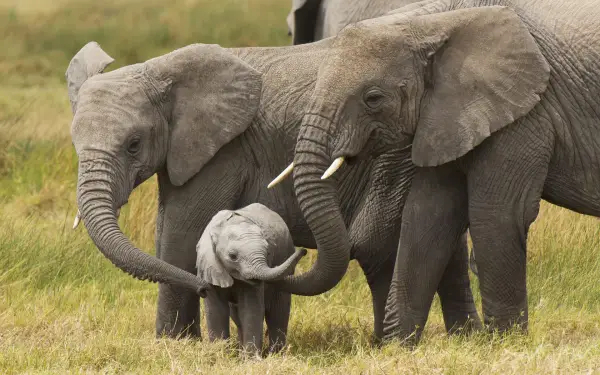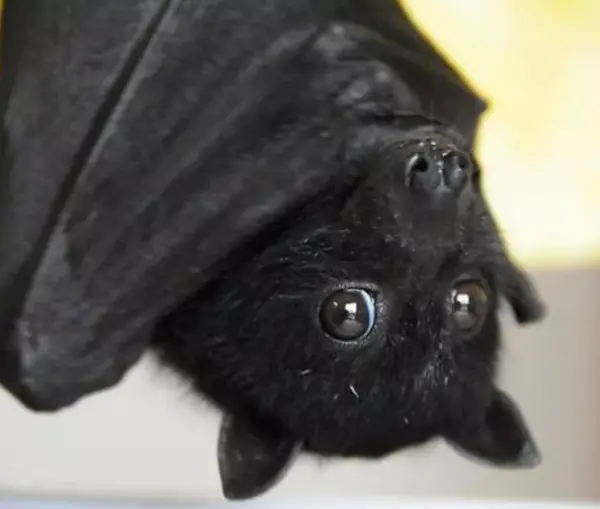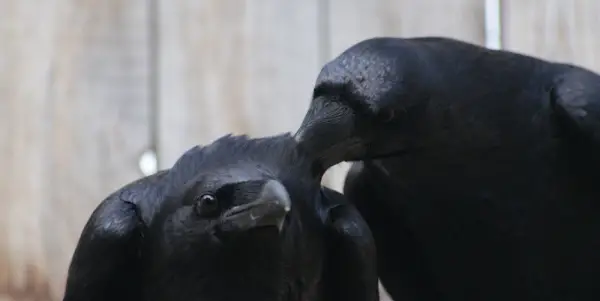10 Impressive Ways Animals Talk to Each Other
We have all at least once wondered do animals talk with each other. Well, even though they don't have a developed language like humans do, many animal species have great communication skills. Some are vocal, others are verbal and all of them are quite amazing.
Prairie dogs know who you are
Prairie dogs look a lot like squirrels, except that they live in the desert, in huge underground communities. They bark and yip, but they have developed a complex “language” in which they have different words for every type of predator they encounter. They also have a specific shout for humans, but the most fascinating is the fact that prairie dogs have different calls for different humans based on their appearance, clothes or how fast they move. So if you ever pass by a group of these chatty creatures you can be sure they are talking about you.
1 / 10

Treehoppers send good vibrations
Small insects called treehoppers cling to plant stems and communicate with each other by vibrating the stem they're on. These signals are not understandable to us without the help of special instruments, but the sheer variety of these vibrations is pretty stunning. The younger ones use signals to tell the group when they find a new stem for eating or to warn group if there is a predator coming. The adults vibrate as a part of a courtship ritual, with males often composing songs to woo females. Maybe that's how the Beach Boys got the idea for “Good vibrations”.
2 / 10

Caribbean reef squids use patterns on their bodies
These strange animals use their pigment cells to send different signals to their peers. These cells are called chromatophores and they are dispersed all over their bodies. Caribbean reef squid can expand or contract these pigments very fast which helps them show different patterns and colors that explain different moods or even some more complex information. Some of these patterns are invitations to mating, some represent aggressive signals.
3 / 10

Elephants engage in long-distance calls
Scientists have for a long time been amazed by the mystery of elephant communication that happened while they were separated by very long distances until one scientist realized that they produce sound waves of low – frequency. These sound waves humans can't hear, but if they are strong enough we feel them as a pressure. Advanced equipment confirmed that elephants use these sounds to talk to each other when separated by several miles. I guess you could say that elephants have mastered long – distance relationships.
4 / 10

Humpback whales are the poets of animal kingdom
Humpback whale males sing to their mates, but the really amazing thing about these songs is that they have sequences that rhyme. We are not sure why, but rhyming probably helps them remember the songs like rhyme in our poetry helps us remember the words. They also use tempo when singing since the whale songs at normal speed sound like somebody having stomach cramps, but if we listen to the sound some 15 times faster it sounds more like some birds are singing.
5 / 10

Head – banging mole rats
Mole rats are rodents and they live in burrows that they dig underground. Since it is very dark there not a lot of light gets in and sound doesn't travel fast enough they can't use visual signs or communicate vocally. That is why some species of mole rats communicate in other ways, for example by head-banging. Blind mole rats from the Middle East bang their heads against the tunnel walls to send signals to other mole rats. They even can develop a specific pattern that helps their neighbors understand their identity. Just imagine someone banging his head against the wall instead of saying: “Hello, my name is…”
6 / 10

Bonobos sound like human babies
Bonobos in the wild are our closest relatives in the primate world and they communicate a lot like human infants. They use a high-pitched call – 'peep', that has to be put in a context to be understood. Bonobos make these calls with a closed mouth and they are very short and squeaky. They produce the in any different situations so they represent a wide range of emotions that can be both positive and negative or even sometimes neutral.
7 / 10

We can't hear them but bats talk to each other
Bats use sonars to understand the location of things around them. They use a process known as echolocation which means that they emit sounds at high frequencies we can't hear and use the echoes from close objects to map out their surroundings. It also helps them for hunting and locating predators. Bats communicate among themselves by using screeches and chirps humans also can't hear because they are emitted at high frequencies. When males want to attract a mate they send sounds in which the syllables of these calls are longer and soothing so they are more attractive to the females. Males use more aggressive tones to keep other males away.
8 / 10

Ravens have mastered gesticulation
Ravens can use their beaks and wings to make gestures and point to an object in a similar way as humans using hands. They can show and offer objects and items like stones or twigs. These gestures are usually meant for the members of the opposite sex and those who see these gestures react by looking at the objects. Sometimes they even touch and clasp their bills or even manipulate the item in unison. This helps them attract a partner or develop already existing bond.
9 / 10

Gorillas talk in many ways
Gorillas have more than 20 different sounds for communication. Some of them are used to signal danger, others are courtship sounds. These sounds have a wide range, some sound like a whisper and some like alarm sirens. However, despite their rich vocal “vocabulary” gorillas use other non-verbal methods to talk to each other. They release pheromones that send information about their health and reproductive status and maybe even specifics like identity or age. Some species even release a special odor that fends off predators or outsiders. They also have some facial expressions similar to ours. A stern and fixed stare is a sign of aggression. If they are afraid they keep an open mouth and their eyes move nervously. Gorillas don't like when you stare at them directly since direct eye contact is interpreted as aggression.
10 / 10

Image sources:
- bioexpedition.com/prairie-dog/
- mnn.com/earth-matters/animals/blogs/thats-no-leaf-9-amazing-images-of-treehoppers
- flickriver.com/photos/envirolawman/tags/cephalopoda/
- kokean.com/cute-baby-elephant-wallpaper-1080p/
- animalians.wikispaces.com/Humpback+Whales
- libutron.tumblr.com/post/108927935781/the-ability-to-mental-mapping-of-the-middle-east
- jfunfun.com/category/cute-animals/page/4/
- 9gag.com/gag/aGVy84z/bats-can-be-cute-too
- motherboard.vice.com/read/ravens-are-smart-enough-to-understand-other-birds-social-interactions
- www.dailybackgrounds.com/gorilla/
